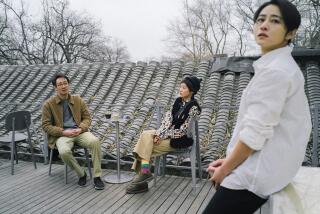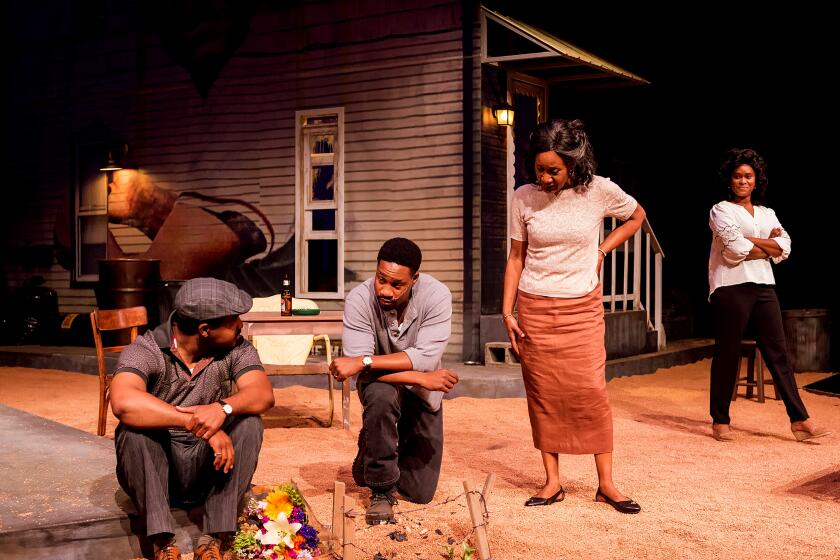Cultural Exchange: Restoration is taking a hold in China
BEIJING — Behind a scrappy red door in an old Beijing hutong, or alleyway, stands a derelict late-Qing Dynasty (1644-1912) courtyard house. The expansive space, with open ceilings that give it the feeling of an abandoned abbey, has had myriad incarnations. Believed to have started as the luxurious living area of Manchu nobility, it was turned into a school, then a plastic factory, then a hostel. Now sunlight pours through broken windows onto edgy artworks temporarily there for a design festival.
It’s just one place, though, in a bigger plan for reinvention of Dashilar, a historical dilapidated neighborhood in the heart of this city. Tales of demolition and rebuilding of vast swathes of the old city, with locals forced to relocate to make way for malls and high-rises, are common, but here an urban development experiment is aiming to revitalize old buildings for more innovative uses.
Authorities have teamed with Beijing-based Approach Architecture Studio to breathe new life into alleyways largely considered slums, where residents cram into divided courtyard spaces without plumbing. Buildings in Dashilar, rather than being knocked down, are starting to be turned into galleries, studios or boutique shops.
“It’s hard for [the government] to imagine there is another way for them to develop old Beijing aside from destroy and rebuild,” says Liang Jingyu, principle architect for Approach Architecture Studio. “We want to give them the confidence to use the space in a creative way. And this will encourage the locals to follow or copy. Polish the old part and you see real beauty there.”
A critical part of the plan is Beijing Design Week, a fair of pop-up shops, cafes, design studios and galleries that took place this month. Forty participants (about half Chinese) from more than a dozen countries installed more than 100 exhibitions in four locations across the capital.
China, the so-called factory of the world, has long been associated with mass production and cheap goods. More recently, leaders have spelled out plans to transform the country to an innovation-based economy. By encouraging local design and revitalizing poor areas of the city, the government-funded Design Week, now in its second year, aims to shift “made in China to create in China,” according to its creative director, Chinese American Aric Chen.
Dashilar has 600 years of history but has fallen on lean times. Brothels and opium dens once sat side by side with teahouses and Chinese opera houses. Homes for some of China’s most long-established brands, such as the Rui Fu Xiang silk shop, remain standing alongside Beijing’s oldest cinema, which opened in 1903.
Yet despite being a few steps from Tiananmen Square, much of Dashilar remains underdeveloped. Design Week aims to tackle this inconsistency. Stylish foreigners and Chinese wandered down dusty gray alleyways, popping into a smattering of rundown buildings that have been transformed for the week. One example is a vacated factory complex whose makeshift exhibitions include sleek designed-in-Beijing furniture and the “Milkywave,” a sweeping light installation created from more than 1,600 cream-colored ceramic yogurt pots popular with the locals.
The plans mark a change from the treatment of neighboring Qianmen Street — which was bulldozed only to be rebuilt in 2008 in a faux late-Qing dynasty style replete with Starbucks and H&M;, a fake tram and a giant cement tree.
By contrast, Dashilar residents can choose to sell or stay under the new scheme. Government-purchased buildings are being offered at low rents to designers who want to set up shop. Design Week has, in part, acted as a live mock-up to show skeptical local officials that this gradual approach, which demands a smaller initial capital investment than the knock down and rebuild model, can create dividends as foot traffic increases. A handful of businesses, including a Chinese film studio and a Dutch-owned gallery, have already signed up. Inhabitants will benefit from improvements to the area as the value of their properties rise in tandem, so the argument goes.
Critics, however, are asking who Dashilar is being renovated for: The locals who live there or tourists and expats looking for the latest hip haunt? Some, like 80-year-old Liu Diang Zhen, who has headed her local neighborhood committee for 30 years, are ambivalent about the plans and don’t think they will make a difference. The Dashilar project, she offered, is “the business of the government.”
Waiter Yue Yao Tong, 22, who works at a bare-bones restaurant serving traditional Beijing snacks, is more optimistic. Above all, Yue does not want to see the old town demolished. “The old buildings are more attractive for visitors,” he explained, sitting next to a vat of bubbling entrails. “You can see the [faux historic] buildings in Qianmen everywhere in China — but it’s very hard to copy a place with history. We want very much to show foreigners that this is the true Chinese style.”
MORE:
CRITIC’S PICKS: Fall Arts Preview
TIMELINE: John Cage’s Los Angeles
More to Read
The biggest entertainment stories
Get our big stories about Hollywood, film, television, music, arts, culture and more right in your inbox as soon as they publish.
You may occasionally receive promotional content from the Los Angeles Times.






